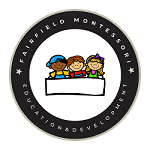The Prepared Environment
The Montessori classroom is designated as the prepared environment, embodying a purposefully organized learning space where every element serves a specific function and has an assigned place. Furniture is both lightweight and tailored to the size of children, while learning materials are crafted to comfortably fit into their hands. The entire setup is deliberately open and accessible. Through a carefully designed environment, Montessori cultivates a passion for learning by fostering curiosity, providing a sense of stability, and offering the freedom for children to make their own choices.
The Montessori Classroom is a Prepared Environment
The Montessori classroom earns its title as the prepared environment, as it is intentionally arranged by trained Montessori educators to establish an ideal learning space for children. Characterized by a neutral and open-plan layout, the classroom exudes a sense of order, beauty, and harmony, with every item serving a specific purpose and having its designated place.
The distinctive charm of Montessori learning becomes apparent through the dynamic interaction between children and the prepared environment. Unlike traditional classrooms, there’s no teacher delivering lessons at the front or students seated uniformly at individual desks. Instead, children move freely, selecting their own activities and engaging in individual or small group work. The choice of workspace is flexible, whether at a table or on the floor, with a small mat defining their area.
In this unique setting, teachers don’t micromanage or correct every piece of work. Instead, they observe attentively, intervening only when necessary to provide guidance. This approach allows children to immerse themselves in their learning, progress at their own rhythm, and uncover knowledge through repetition and practice.
Montessori education embraces an active, individually paced, and often self-correcting learning style, entirely tailored to the diverse needs and interests of each child.
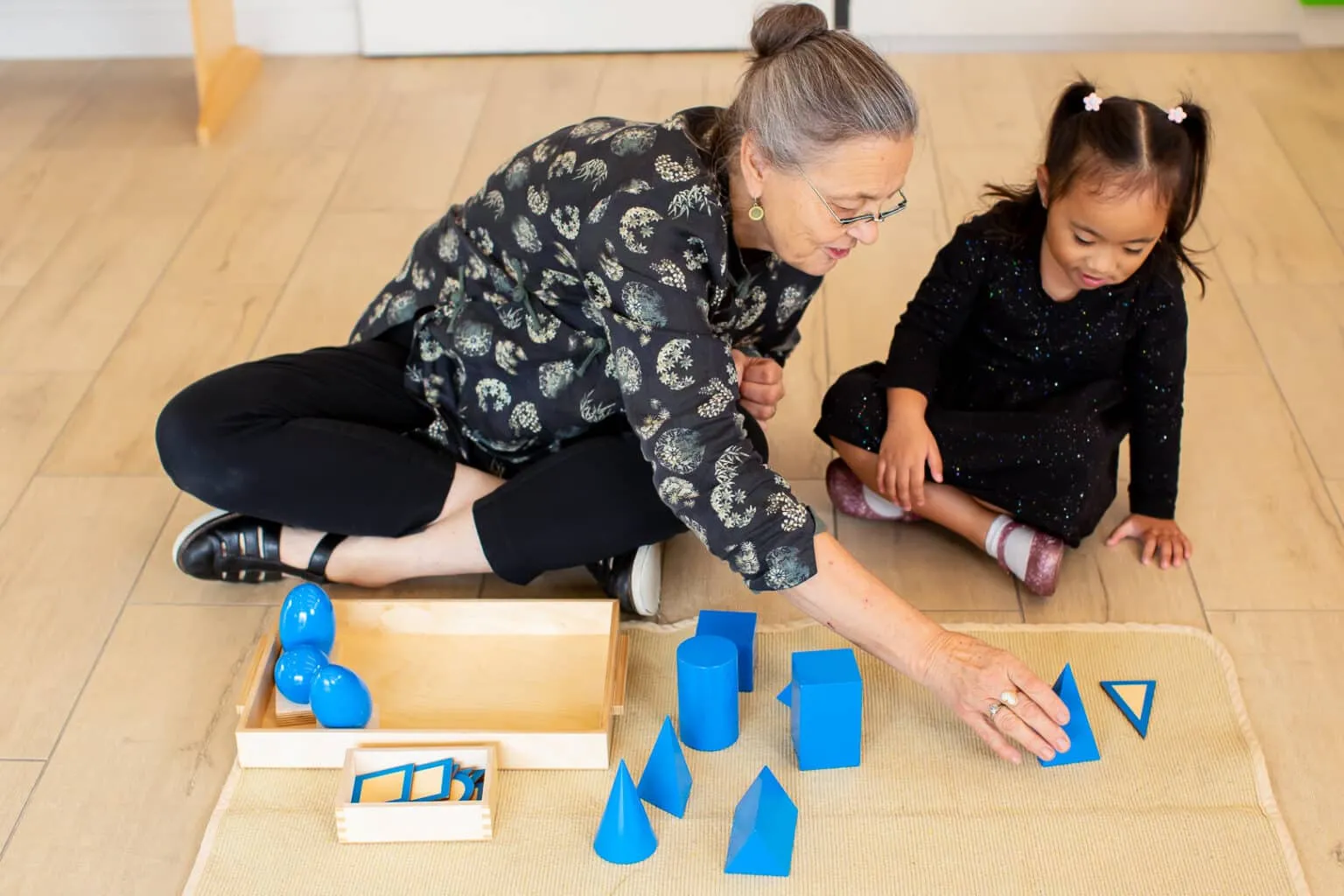
Features of the Prepared Environment
- Structure and order
- Clearly defined curriculum areas
- Materials are displayed in progression order
- Left to right orientation
- Freedom of movement and choice
- Emphasis on independence
- Freedom within limits
The Prepared Environment
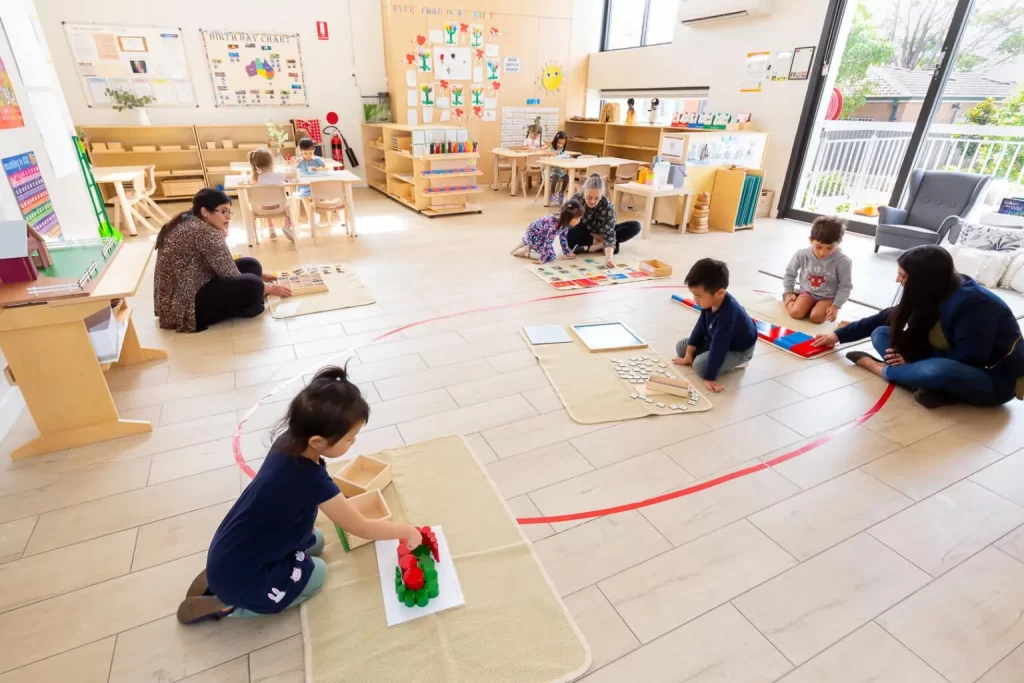
Order
In the prepared environment, tranquility and structure define the learning space, providing children with a clear understanding of their surroundings. Each curriculum area is thoughtfully organized with dedicated shelves for materials, designated spaces for table or floor work, a specific area for meals, and the ellipse where children gather collectively. The layout promotes an organic flow, facilitating seamless movement, learning, and exploration within the space.
Child-Sized
Dr. Montessori recognized the challenges children face in an environment designed for adults, leading her to create a child-centered approach. This involved crafting furniture to suit children’s proportions, employing accessible low open shelves, and designing learning materials that comfortably fit into a child’s hand. Every element in the prepared environment is intentionally crafted to foster children’s independence and self-mastery.
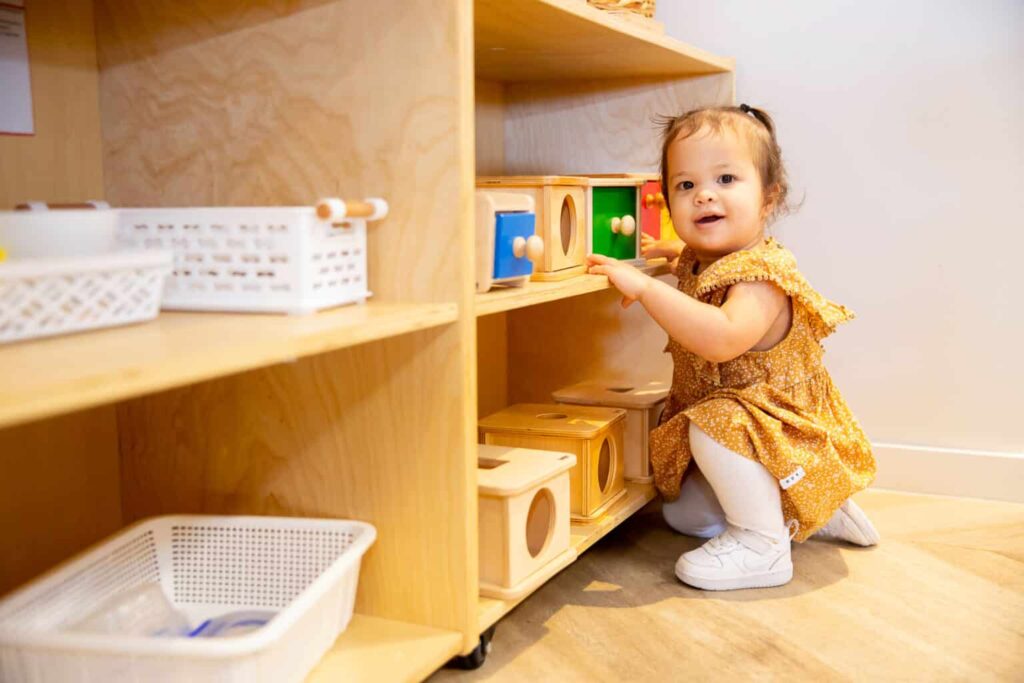
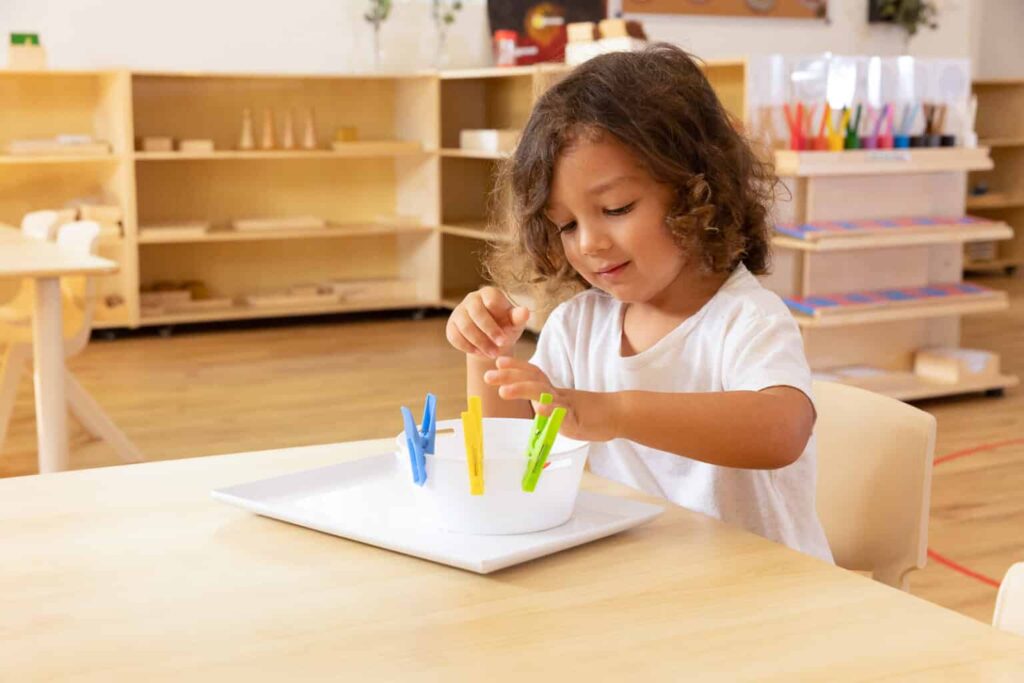
Beauty
Montessori classrooms embrace an aesthetic of cleanliness, order, and a soothing neutral color palette. The environment predominantly features natural materials, meticulously organized and thoughtfully displayed. Vibrant colors on the walls are kept to a minimum, art is neatly showcased in a designated space, and there is no singular central focal point, contributing to an environment that exudes simplicity and intentional design.
Real
The Montessori approach places a significant emphasis on incorporating authentic, real-life objects into the classroom. This involves utilizing genuine photographs of animals and objects instead of cartoons and opting for ceramic bowls and metal utensils rather than plastic substitutes. The purpose behind this approach is to offer children tangible, real-world learning experiences that enhance their confidence and competence for handling situations in their everyday lives.
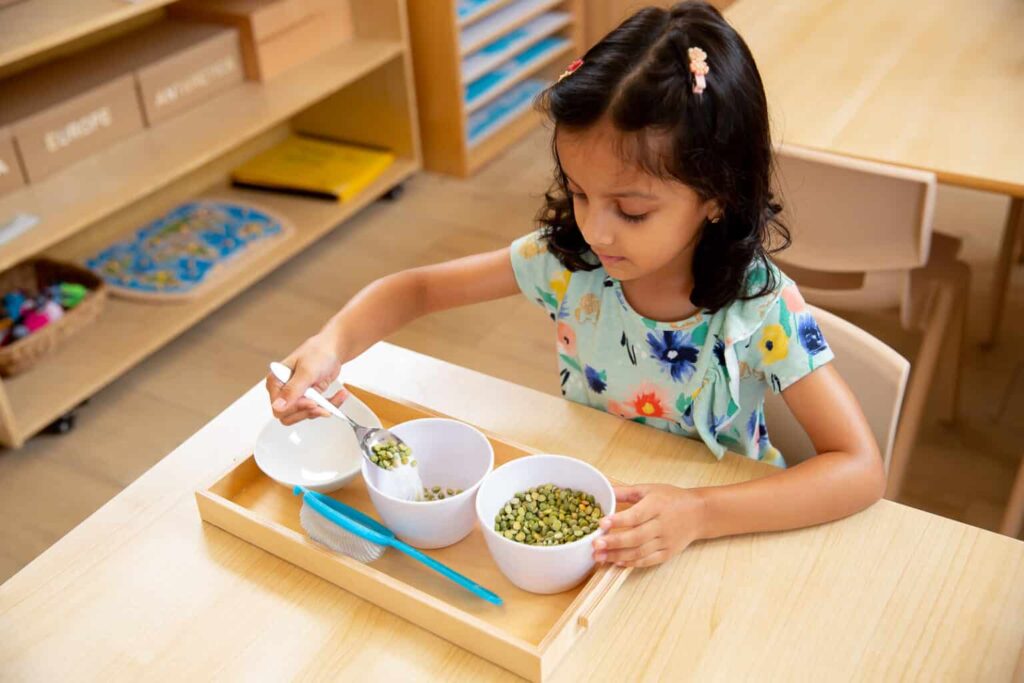
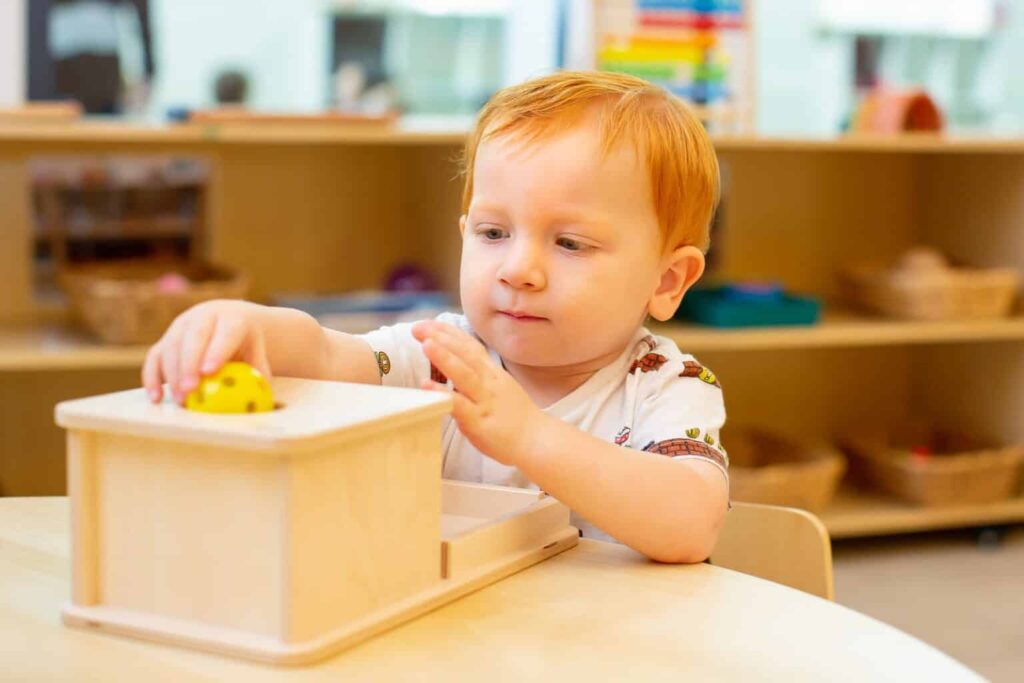
Freedom and Choice
In the prepared environment, children enjoy the privileges of freedom of movement, freedom of choice, and freedom of time. This allows students to pursue their individual interests, engage with activities for as long as they desire, and determine the manner and location of their work.
Stability
The Montessori classroom is characterized by a consistent and stable learning environment with minimal changes. Shelves and furniture remain largely stationary, providing children with a constant reference point for locating items and understanding their designated places. This stability plays a crucial role in fostering a sense of security and familiarity for the children. While the core Montessori materials remain unchanged, occasional introductions of new activities, particularly in the practical life area, are made to align with and reflect the evolving interests of the children.
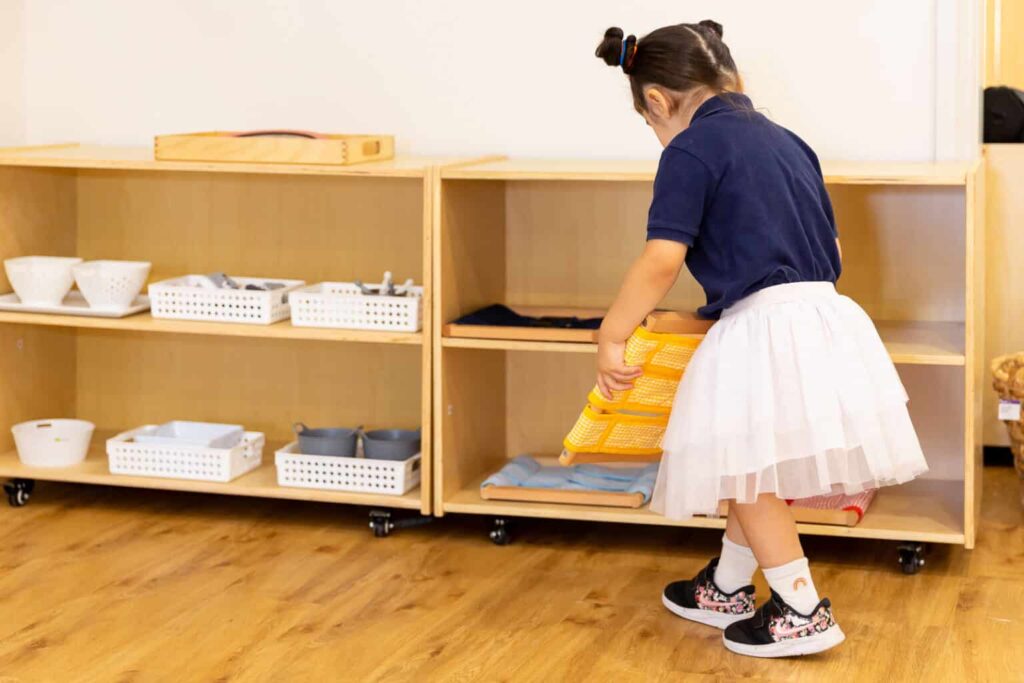
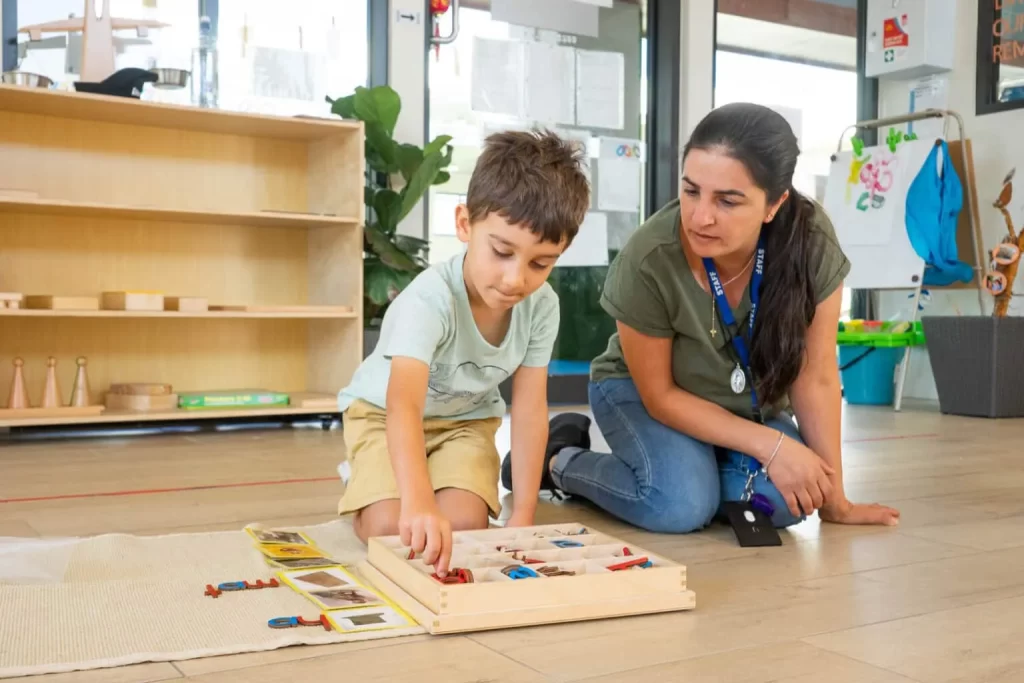
Left to Right Progression Order
Within the prepared environment, Montessori materials are meticulously arranged by curriculum area, following a left-to-right progression order. This deliberate organization, from the simplest to the most challenging, establishes a logical structure that offers a clear and sequential pathway for learning.
Harmony
The prepared environment exudes a palpable sense of peace and harmony. Students navigate the space with care, define their individual workspaces, and demonstrate respect for one another’s activities. Through instinctive collaboration, the children contribute to the creation of a harmonious classroom community. This atmosphere of harmony is not only conducive to learning but also essential for fostering concentration and facilitating exploration.
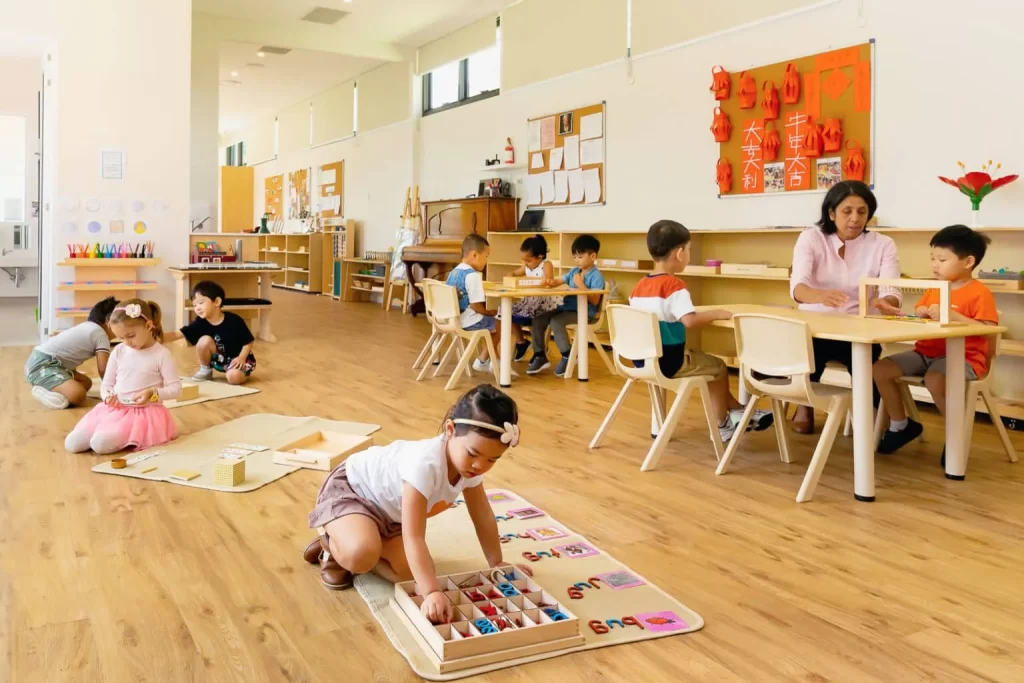
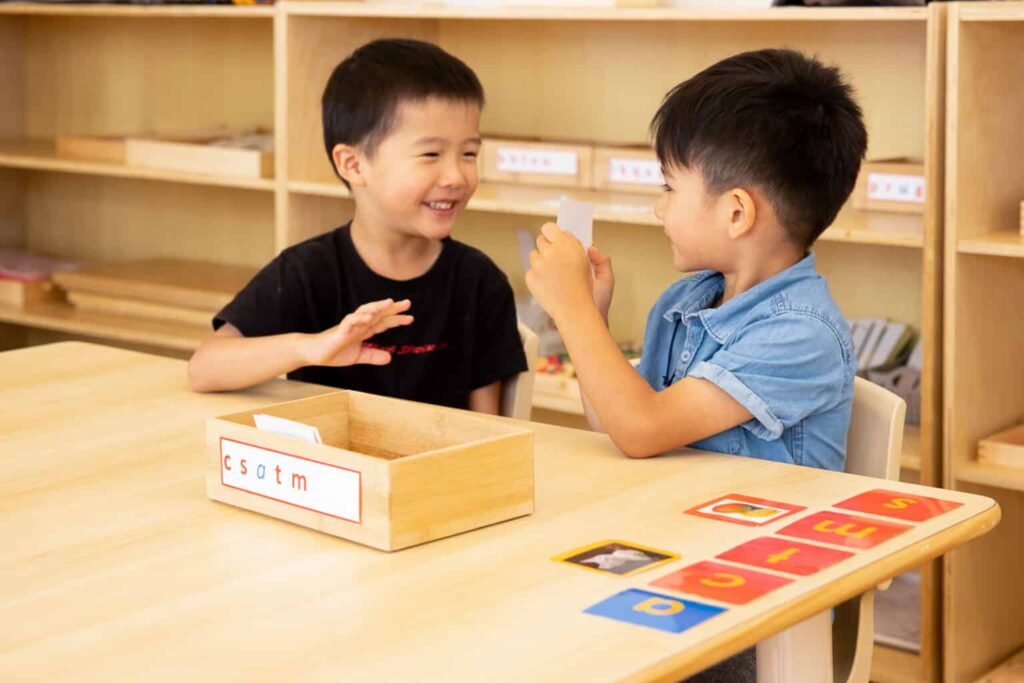
Freedom within Limits
The concept of freedom within limits in the prepared environment entails that while children enjoy the freedom to pursue their interests, move about freely, and select their work, there are established ground rules. These rules ensure that their behavior remains reasonable and acceptable within the learning space.
Independence
In the prepared environment, children are afforded a secure space for exploration and the nurturing of their independence. The structure of the prepared environment, the Montessori materials, the designated curriculum areas, and the guiding presence of the educator collectively support and foster children’s independence. Actively encouraged to think and act for themselves, children in this environment are empowered to embrace and develop their autonomy.
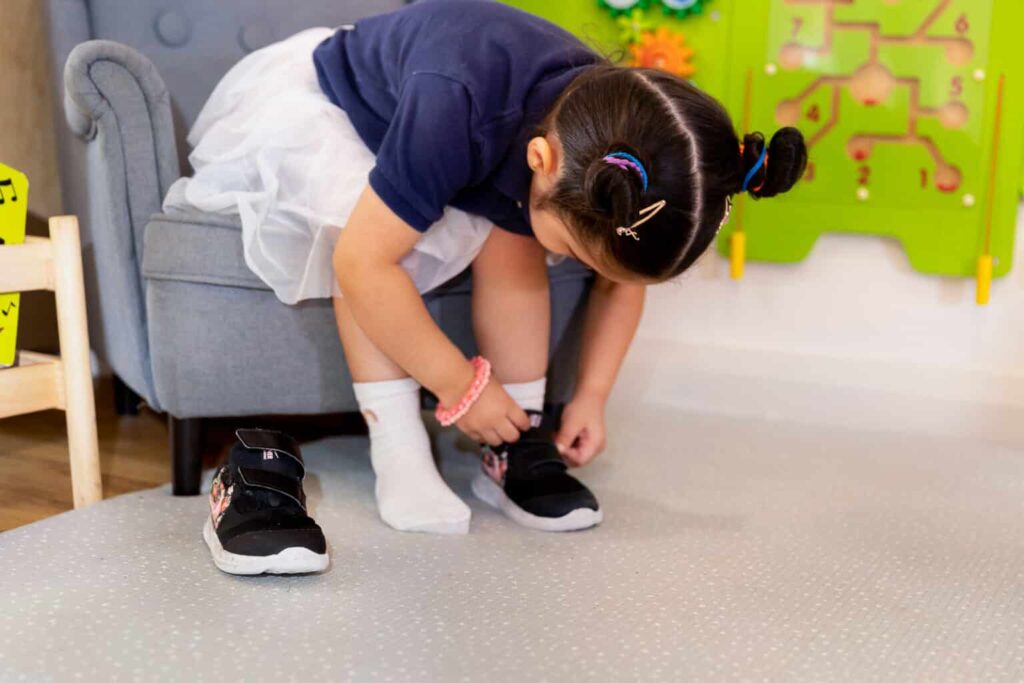
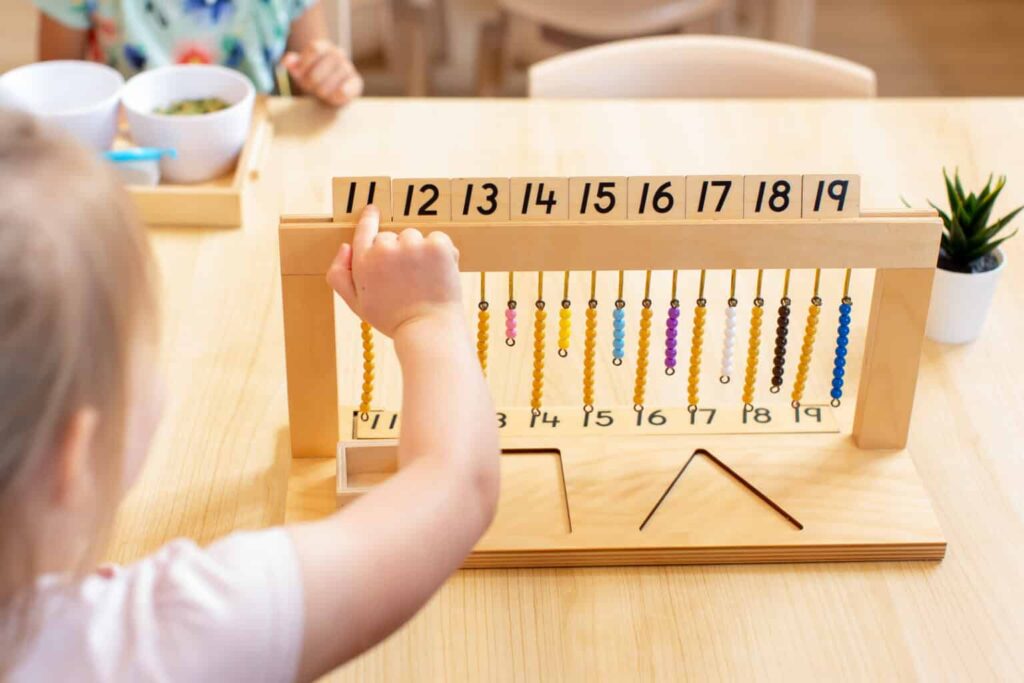
Where to next? Montessori Materials
Montessori materials serve as interactive learning aids crafted to enable children to explore essential concepts through repetitive practice. Designed to teach one skill at a time, each material is intentionally engineered to foster independent learning and problem-solving. The systematic progression of Montessori materials establishes the groundwork for the comprehensive Montessori Curriculum.
